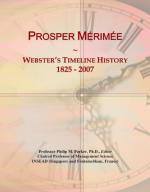|
This section contains 6,385 words (approx. 22 pages at 300 words per page) |

|
SOURCE: MacKenzie, Robin. “Space, Self and the Role of the Matecznik in Mérimée's Lokis.” Forum for Modern Language Studies 36, no. 2 (April 2000): 196-208.
In the following essay, MacKenzie examines the duality theme and its relationship to the representation of space and the role of the matecznik in “Lokis.”
“Lokis” was one of Mérimée's last stories, begun in July 1868 and published in the Revue des deux Mondes in September 1869.1 Generically, it is usually categorised as a conte fantastique, though some critics stress the merveilleux aspects of the tale.2 The plot can be read as a variation on the werewolf theme, with the eponymous hero Michel/Lokis revealing ursine inclinations—disturbing signs of bear-like behaviour—throughout the tale, before finally murdering his bride on their wedding night and escaping into the forest. There are also overtones of vampirism: Michel/Lokis reveals in unguarded moments a fascination with...
|
This section contains 6,385 words (approx. 22 pages at 300 words per page) |

|


